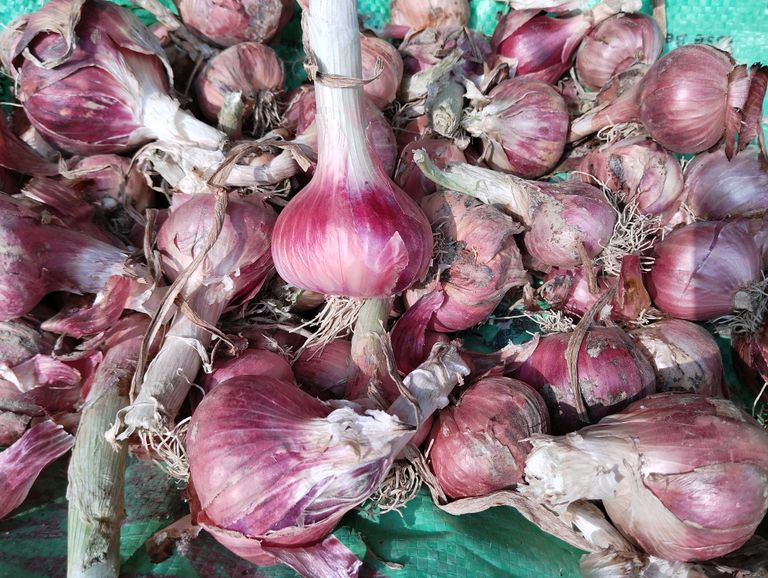
The Proper Method for Planting Onions A Comprehensive Guide.
Onions are a versatile and essential crop used in a variety of dishes worldwide. Planting onions requires careful planning and proper technique to ensure a healthy yield. Whether you are a commercial farmer or a home gardener, this guide will help you master the art of onion cultivation.
Types of Onions
Before planting, it is important to choose the right type of onion for your climate and needs. The three main types of onions are:
- Short-Day Onions: Best suited for regions with mild winters.
- Intermediate-Day Onions: Thrive in moderate climates.
- Long-Day Onions: Ideal for cooler regions with longer daylight hours.
Ideal Growing Conditions
Soil Requirements: Onions prefer loose, well-draining soil with a pH between 6.0 and 7.0. Loamy or sandy soils enriched with organic matter work best.
Sunlight: Onions require full sunlight for at least 6-8 hours daily.
Temperature: Onions grow well in temperatures ranging from 13°C to 24°C (55°F to 75°F).
Preparation for Planting
- Select High-Quality Seeds or Sets
Choose disease-resistant and high-yielding varieties. Onion sets (small bulbs) are easier to grow than seeds for beginners.
- Prepare the Soil
Remove weeds and debris from the planting area.
Till the soil to a depth of 12-15 inches.
Incorporate compost or well-rotted manure to improve soil fertility.
- Create Raised Beds (Optional)
If the soil retains water, raised beds can improve drainage and prevent rot.
Steps to Plant Onions
- Spacing
Plant onion seeds 1/4 to 1/2 inch deep in rows.
Maintain a spacing of 4-6 inches between plants and 12-18 inches between rows.
- Planting Seeds or Sets
For seeds: Sow them directly into the soil and cover lightly with soil.
For sets: Push the bulb into the soil with the pointed end up, leaving the top slightly exposed.
- Watering
Water the plants immediately after planting. Keep the soil consistently moist but not waterlogged.
Caring for Onion Plants
- Weeding
Regularly remove weeds as onions do not compete well with them. Use shallow weeding to avoid disturbing the roots.
- Fertilization
Apply a nitrogen-rich fertilizer every 2-3 weeks during the growing season. Stop fertilizing once the bulbs start maturing.
- Irrigation
Water deeply but less frequently to encourage deep root growth. Reduce watering when the tops begin to yellow and fall over.
- Pest and Disease Control
Watch out for pests like onion maggots and diseases like downy mildew. Use organic or chemical controls as needed.
Harvesting Onions
- When to Harvest
Onions are ready for harvest when the tops turn yellow and fall over. This typically occurs 90-120 days after planting.
- How to Harvest
Gently loosen the soil around the bulbs using a fork or spade.
Pull the onions out carefully to avoid bruising.
- Curing and Storage
Lay the onions in a dry, shaded area with good air circulation for 2-3 weeks.
Once the necks are completely dry, trim the tops and roots.
Store the onions in a cool, dry place for long-term use.
Common Mistakes to Avoid
- Overcrowding the plants, which leads to smaller bulbs.
- Overwatering, which can cause root rot.
- Planting in poor soil without adequate nutrients.
Planting onions successfully requires proper planning, care, and attention to detail. By following the steps outlined in this guide, you can enjoy a bountiful harvest of high-quality onions. Whether you're planting for personal use or commercial production, these tips will set you on the path to success.
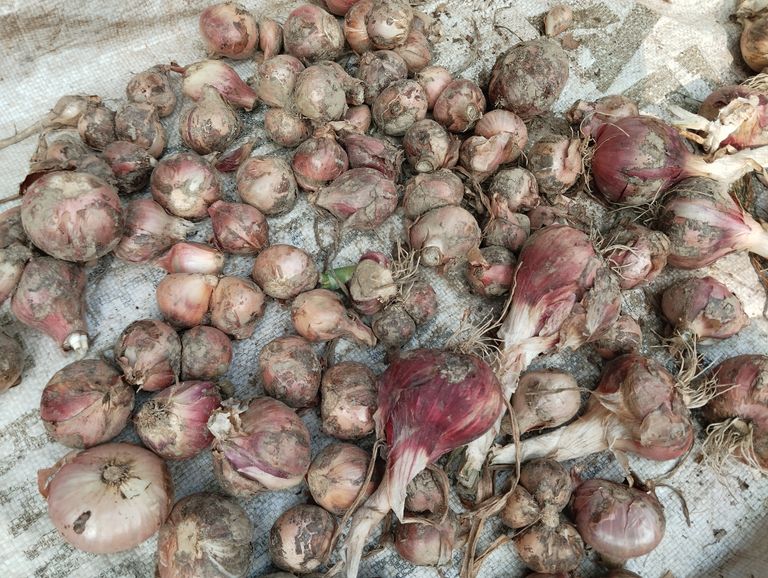
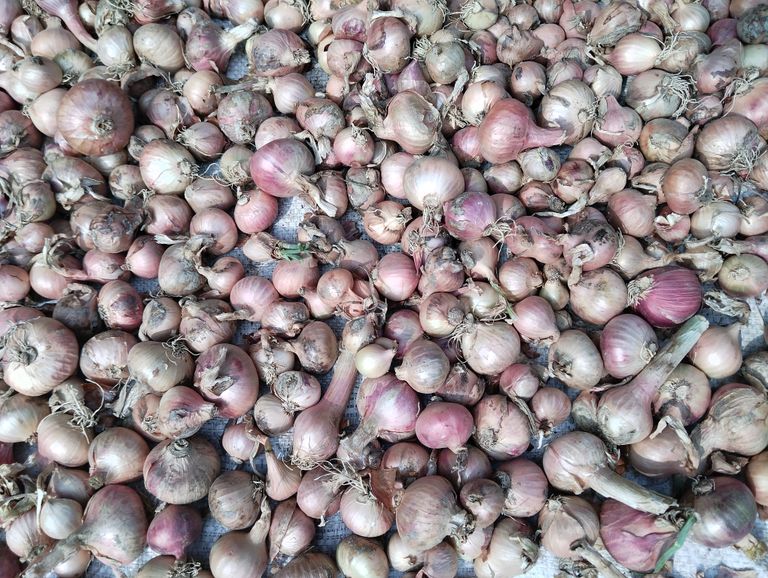
The Benefits of Eating Onions: A Complete Guide
Onions are a staple ingredient in kitchens worldwide, known not just for their ability to enhance flavors but also for their numerous health benefits. This humble vegetable, belonging to the Allium family, is rich in nutrients and medicinal properties. Let’s explore the many advantages of incorporating onions into your diet.
- Rich in Nutrients
Onions are packed with essential vitamins and minerals, including:
Vitamin C: Boosts immunity and supports skin health.
Vitamin B6: Aids in red blood cell production and brain function.
Manganese: Contributes to bone health and metabolism.
Fiber: Promotes good digestion and gut health.
Despite being low in calories, onions provide a wealth of nutrients essential for overall health.
- Supports Heart Health
Onions contain compounds like quercetin and sulfur, which are known to:
Lower blood pressure: They help relax blood vessels and improve circulation.
Reduce cholesterol: Regular onion consumption can lower bad LDL cholesterol levels.
Prevent blood clotting: This reduces the risk of heart attacks and strokes.
Research suggests that eating onions can significantly improve heart health and reduce the risk of cardiovascular diseases.
- Boosts Immunity
Onions are rich in antioxidants, particularly quercetin, which helps combat inflammation and boosts immune function. The sulfur compounds in onions have antimicrobial properties, making them effective in fighting infections and viruses.
- Improves Digestive Health
Onions are an excellent source of prebiotics, which feed the good bacteria in your gut. A healthy gut microbiome is essential for:
Better digestion.
Absorption of nutrients.
A stronger immune system.
Additionally, the fiber in onions prevents constipation and supports regular bowel movements.
- Helps Control Blood Sugar
The sulfur compounds in onions, particularly allyl propyl disulfide, have been found to:
Increase insulin production.
Reduce blood sugar levels.
This makes onions a valuable food for people managing diabetes or at risk of developing it.
- Promotes Healthy Skin and Hair
Onions are rich in antioxidants and sulfur compounds, which promote:
Skin health: They protect against free radicals that cause premature aging.
Hair growth: Onion juice has been used for centuries to reduce hair fall and improve scalp health.
Regular consumption of onions can help maintain a youthful appearance and strong, shiny hair.
- Fights Cancer
Onions contain powerful antioxidants like quercetin and anthocyanins, which are known to combat cancer-causing free radicals. Studies have shown that the sulfur compounds in onions can reduce the risk of cancers such as:
Stomach cancer.
Colon cancer.
Breast cancer.
The anti-inflammatory properties of onions also play a role in cancer prevention.
- Supports Bone Health
Onions are a good source of calcium, which is essential for maintaining strong bones. Regular consumption can help improve bone density, reducing the risk of osteoporosis, particularly in older adults.
- Enhances Respiratory Health
The anti-inflammatory properties of onions can be beneficial for people suffering from respiratory conditions such as asthma or bronchitis. The sulfur compounds in onions act as natural expectorants, helping to clear mucus and improve breathing.
- Aids in Weight Management
Onions are low in calories but high in flavor, making them an excellent addition to weight-loss diets. The fiber content helps keep you full for longer, reducing unnecessary snacking and calorie intake.
How to Include Onions in Your Diet
- Raw: Add thinly sliced onions to salads or sandwiches.
- Cooked: Use onions in soups, stews, stir-fries, and curries.
- Pickled: Enjoy the tangy flavor of pickled onions as a side dish.
- Juice: Drink fresh onion juice for its concentrated benefits.
Onions are a powerhouse of nutrients and medicinal properties, offering numerous health benefits from boosting immunity to promoting heart and skin health. Incorporating onions into your daily diet is an easy and effective way to improve overall well-being. Whether eaten raw, cooked, or juiced, this versatile vegetable is a must-have for a healthy lifestyle. So, make onions a regular part of your meals and reap their incredible health rewards.
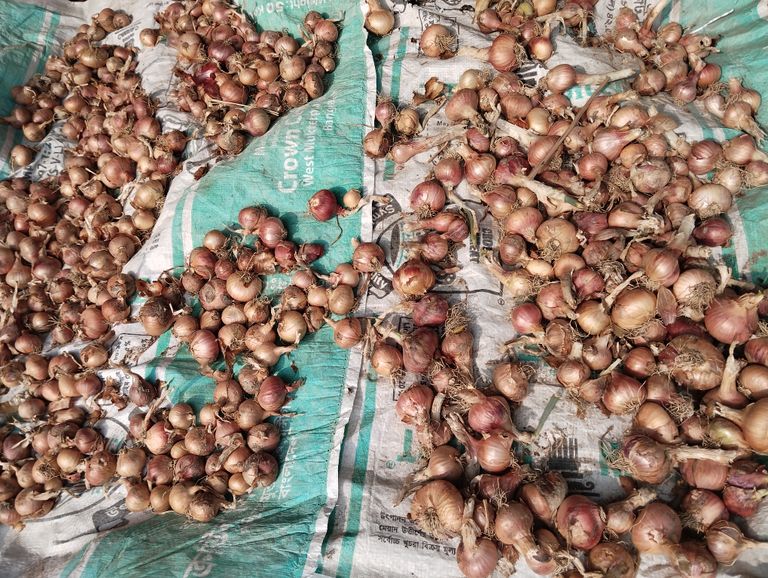
The Friends of Onion: A Culinary and Nutritional Exploration
Onion, a humble bulb used in kitchens worldwide, is more than just an ingredient. This versatile vegetable has many "friends" in the culinary and nutritional worlds, which enhance its flavors, balance its pungency, and complement its nutritional value. Let’s explore these companions and their roles in creating delicious dishes and promoting health.
- Garlic: The Perfect Companion
Onion and garlic are often considered inseparable in cooking. Together, they form the base for countless cuisines, including Indian, Mediterranean, and French. Their combined flavors create a deep, aromatic foundation for soups, stews, and sauces.
Culinary Benefits:
Garlic’s sharp, earthy notes balance the sweetness of cooked onions, providing a robust flavor profile.
Nutritional Synergy:
Both are rich in antioxidants and sulfur compounds that boost immunity, improve heart health, and have anti-inflammatory properties.
- Tomato: Sweet and Tangy Partner
Tomato and onion share a timeless partnership, appearing together in dishes like curries, salsas, and salads. The juicy, tangy nature of tomatoes contrasts beautifully with the savory tones of onions.
Culinary Benefits:
This duo forms the base for gravies, pasta sauces, and chutneys. Adding spices enhances their flavor.
Nutritional Synergy:
Tomatoes are rich in lycopene, a powerful antioxidant, while onions provide quercetin, another antioxidant. Together, they offer significant anti-cancer and cardiovascular benefits.
- Potato: The Comforting Pair
The starchy, mild flavor of potatoes complements the boldness of onions, making them a classic combination in dishes like hash browns, samosas, and gratins.
Culinary Benefits:
Onion adds depth and moisture to potato-based dishes, while the potato absorbs and balances the onion's flavor.
Nutritional Synergy:
Potatoes are a source of potassium and vitamin C, while onions provide fiber and prebiotics, supporting digestive health.
- Bell Peppers: The Vibrant Trio
Onions, when paired with colorful bell peppers, create a vibrant and flavorful mix often seen in fajitas, stir-fries, and pizza toppings.
Culinary Benefits:
Bell peppers’ sweetness balances the pungency of onions, while their crunch adds texture.
Nutritional Synergy:
Bell peppers are rich in vitamin C and beta-carotene, enhancing the overall antioxidant power of the dish.
- Herbs and Spices: Enhancing the Aroma
Herbs like thyme, parsley, and cilantro, and spices such as cumin, coriander, and turmeric, elevate the flavor of onions in various cuisines.
Culinary Benefits:
Herbs and spices amplify the aroma and taste of onion-based dishes, creating layers of complexity.
Nutritional Synergy:
Many herbs and spices have anti-inflammatory and antioxidant properties that complement the health benefits of onions.
- Meats and Proteins: Adding Richness
Onions are a staple in meat dishes, from roasts to kebabs, and work equally well with plant-based proteins like tofu and lentils.
Culinary Benefits:
The caramelization of onions enhances the savory flavors of meats and proteins, creating umami-rich dishes.
Nutritional Synergy:
Combining onions with proteins aids in better absorption of certain nutrients, such as iron from plant-based sources.
- Cheese: The Creamy Counterpart
Cheese and onion is a comforting combination found in pies, quiches, and sandwiches.
Culinary Benefits:
The creaminess of cheese mellows the sharpness of onions, creating a harmonious balance.
Nutritional Synergy:
Cheese provides calcium and protein, while onions add fiber and antioxidants, making this pair both indulgent and nutritious.
Health Benefits of Onion and Its "Friends"
Onions are packed with health benefits, including:
- Improved Heart Health: Rich in flavonoids and sulfur compounds, onions reduce blood pressure and cholesterol levels.
- Boosted Immunity: Antioxidants like quercetin protect against infections.
- Digestive Health: Onions are a prebiotic food, promoting a healthy gut microbiome.
When paired with their culinary friends, onions amplify these benefits, creating not just delicious but also healthful dishes.
The "friends of onion" are more than just companions—they are essential to elevating flavors, adding textures, and boosting nutritional profiles. From garlic and tomatoes to herbs and cheese, these pairings highlight the versatility of onions in global cuisines. Whether you’re cooking a simple meal or an elaborate feast, remember that onions and their friends are the backbone of countless culinary delights.
Crispy Fried Onions: A Culinary Delight
Fried onions, known as "piyaj vaja" in Bengali, are a simple yet magical ingredient that can elevate any dish with their golden crispiness and caramelized flavor. From garnishing biryanis to enhancing the taste of soups, fried onions are a staple in many cuisines worldwide. In this blog, we’ll dive deep into the art of making perfect fried onions, their culinary uses, and tips to achieve the desired crispiness.
What Are Fried Onions?
Fried onions are thinly sliced onions that are deep-fried or shallow-fried until they turn golden brown and crispy. Their sweetness, which comes from the natural sugars in onions, is accentuated during the frying process. They are not only delicious but also versatile, lending a rich aroma and texture to dishes.
The Magic of Onions
Onions are a key ingredient in many cuisines around the world. Whether used as a base for gravies, soups, or as .
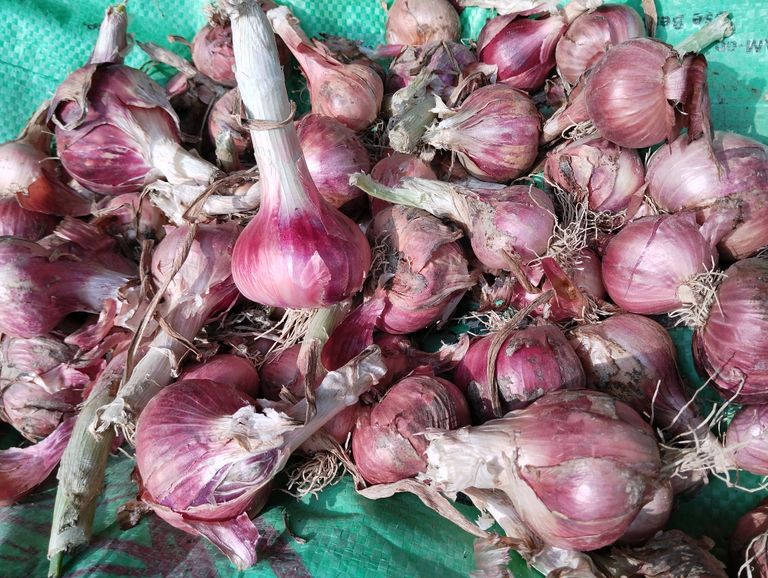
Preparing Land for Onion Cultivation
Onions are one of the most popular and essential crops grown worldwide. To achieve a high yield and good quality onions, proper land preparation is crucial. This article provides a detailed guide on how to prepare land effectively for onion cultivation.
- Choosing the Right Land
Onions grow best in well-drained, sandy loam to loam soils with good fertility. The land should have a pH level of 6.0 to 7.5. Ensure the area receives full sunlight as onions are sensitive to shade. Avoid waterlogged areas, as excess moisture can cause bulb rotting.
- Clearing the Land
Begin by removing any weeds, stones, and debris from the field. Weeds can compete with onion seedlings for nutrients and water, reducing growth and yield. Clear the land completely to create a clean base for cultivation.
- Plowing and Tilling
Primary Plowing: Start with deep plowing (about 20–30 cm) to break up hard soil and improve aeration. This step also helps in exposing soil pests to sunlight, reducing their population.
Secondary Tilling: Follow up with tilling to break the soil into finer particles. This ensures a smooth seedbed, which is essential for uniform onion growth.
- Leveling the Soil
After tilling, level the soil using a leveling board or harrow. A well-leveled field ensures uniform water distribution, prevents waterlogging, and supports even crop growth.
- Soil Testing and Fertilization
Conduct a soil test to determine nutrient levels and pH. Based on the test results:
Apply organic manure such as farmyard manure (10–15 tons per hectare) to enrich the soil with nutrients and improve its structure.
Incorporate chemical fertilizers like nitrogen, phosphorus, and potassium in balanced proportions. A common recommendation is 50–100 kg of nitrogen, 40–60 kg of phosphorus, and 50–80 kg of potassium per hectare.
Mix fertilizers thoroughly into the soil during land preparation.
- Creating Ridges and Furrows
Prepare the land into ridges and furrows or raised beds, depending on the irrigation method. Ridges are essential for proper drainage and aeration, as onions cannot tolerate waterlogging. The spacing should typically be:
Between Rows: 15–20 cm
Between Plants: 7–10 cm
- Irrigation Setup
Ensure a reliable irrigation system is in place. Drip irrigation is highly recommended for onions, as it provides water directly to the root zone, conserves water, and reduces the risk of fungal diseases.
- Weed Control and Mulching
To reduce weed growth, apply organic mulch like straw or plastic mulch. Mulching also helps retain soil moisture and regulates soil temperature, promoting better germination and growth.
- Final Preparation
Before sowing seeds or transplanting onion seedlings, give the field a light irrigation to settle the soil. Ensure the seedbed is moist but not waterlogged.
- Sowing or Transplanting
Direct Sowing: For small-scale farming, onion seeds can be sown directly into the prepared beds.
Transplanting: For larger-scale farming, grow seedlings in a nursery and transplant them into the field when they are 6–8 weeks old.
Proper land preparation is the foundation of a successful onion crop. By following the steps outlined above, farmers can ensure healthy plant growth, reduce the risk of diseases, and achieve higher yields. With consistent care and management, onion cultivation can become a profitable venture for farmers worldwide.